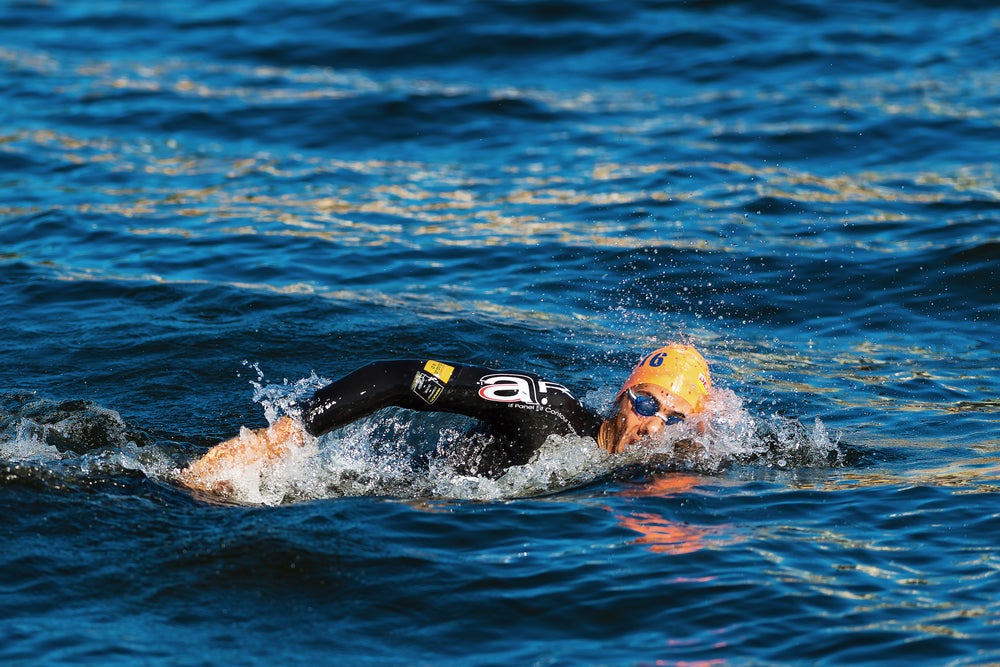Ask Coach Sara: Should I Save My Legs For The Bike/Run?

Photo: <a href="http://www.shutterstock.com/gallery-873643p1.html?cr=00&pl=edit-00">Stefan Holm</a> / <a href="http://www.shutterstock.com/editorial?cr=00&pl=edit-00">Shutterstock.com</a>
Your questions about swimming as a triathlete, answered by coach and professional triathlete Sara McLarty.
Q: What training gear do I need to prepare for 70.3 and Ironman? –Krista G.
A: Basic swim gear includes a well-fitting swimsuit, goggles that are comfortable and don’t leak and a swim cap for anyone with long hair. There is an endless list of swim equipment that is not required but can make swimming more productive, challenging and fun. The two most commonly used items are a kickboard and pull buoy, but these items are often provided at the pool. Swim fins, paddles and a snorkel are very personal and should be purchased to fit the individual. Also, don’t forget to buy a mesh bag to carry all your wet gear to and from the pool!
RELATED: 4 Swim Sets For 70.3 Training
Q: Training for three sports takes up so much time! Is there any real value in spending any of my training time in the gym? What value do I get out of a gym-based strength program? –Ben H.
A: Yes, training for three sports can take up a lot of time. However, sitting on the sidelines and in the doctor’s office because of a muscle imbalance or overuse injury is much more time-consuming! A strength program should be part of every triathlete’s weekly plan, even if this means one hour less spent swimming, biking or running. Try to find two 30-minute blocks of time that you can devote to strength and injury prevention. You can do many exercises at home with a few small pieces of equipment and body-weight exercises, or you can plan to stay a few minutes after swimming to use the big equipment at the gym.
RELATED: 3 Swim Strength Training Exercises
Q: What’s your advice for a new swimmer who is afraid of deep water? I get tired quickly and there are no walls in open water. –Tracie H.
A: Start by training in the shallow end where you can touch the bottom if you need to. Gradually increase your distance, but when you get tired, roll onto your back and float while you catch your breath. You can also switch to breaststroke with your head out of the water. This will prepare you for the open water where there are no walls when you need to rest. Pretty soon you won’t have anything to fear about deep water.
RELATED: 7 Steps To Get Over Your Fear Of Open Water
Q: I’ve heard that you should not use your legs during the swim and save them for the bike and the run. What is your take on this? –Eli V.
A: I agree that most triathletes should not use a six-beat kick during the swim of a triathlon. However, that is not a free pass to not kick at all. While a two-beat kick might not provide much propulsive force, your legs are providing stabilization for your hips and core while your torso rotates. The downward stroke of your left leg counter-balances for the stroke of your right arm and provides a powerful underwater pull. Kicking is a critical part of the freestyle stroke even when you are floating in a wetsuit.
Pro triathlete and swim coach Sara McLarty has 25-plus years of experience and knowledge about swimming mechanics, efficiency and technique.